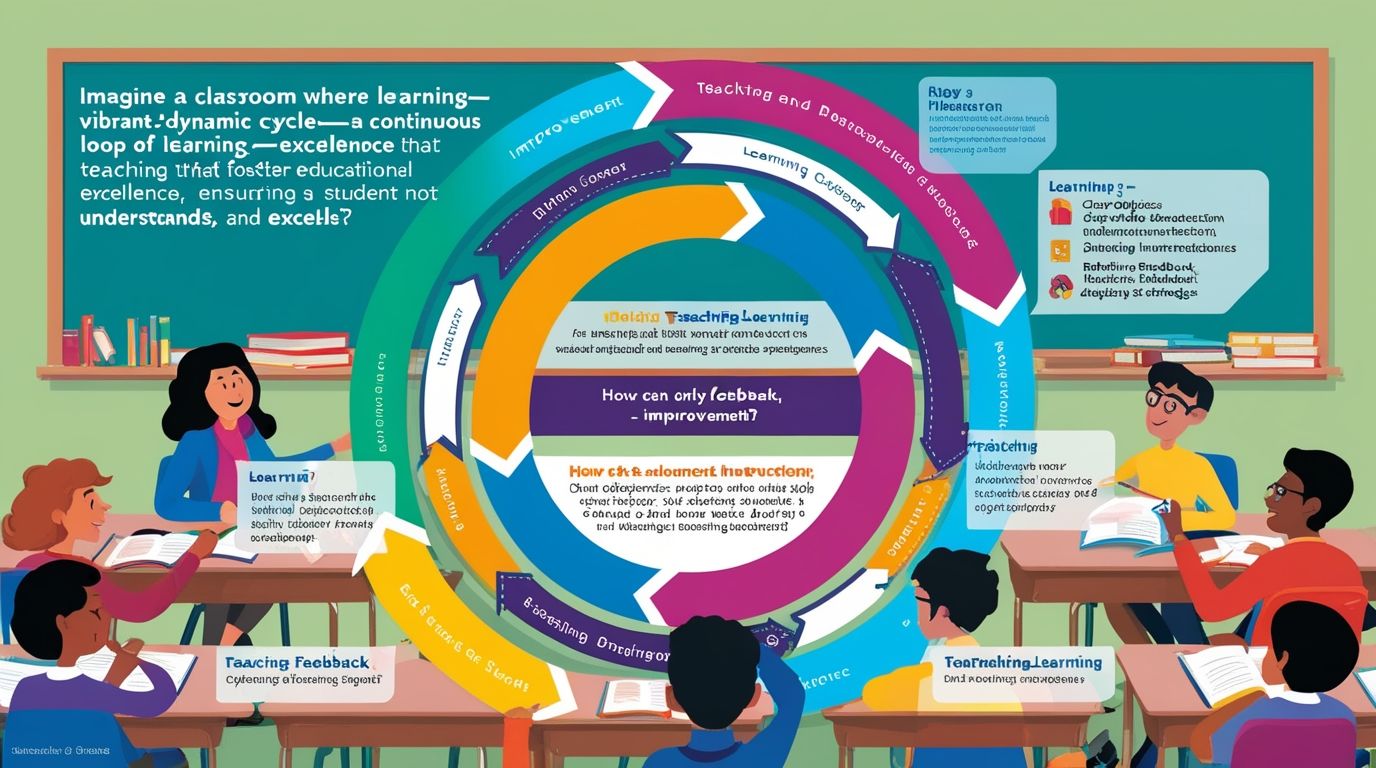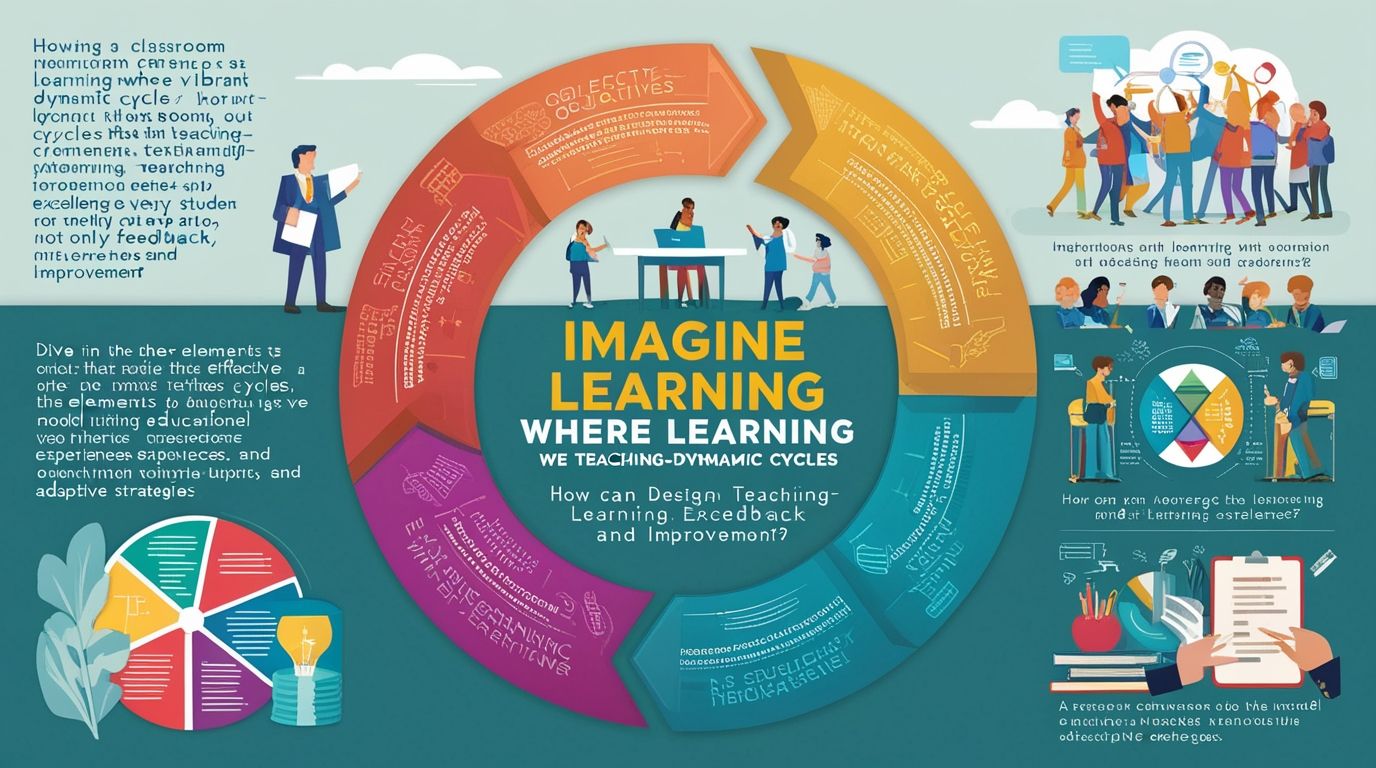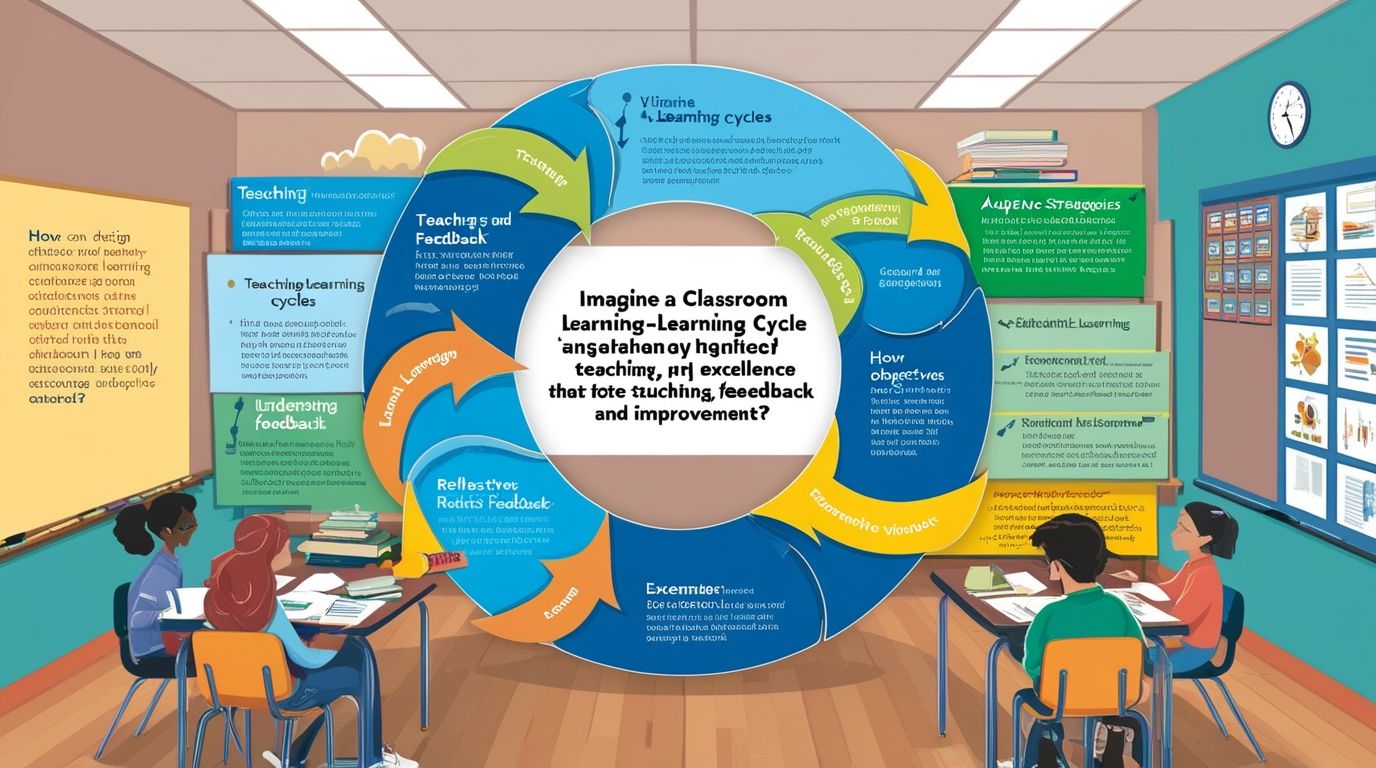The Teaching-Learning Cycles for Educational Excellence In the evolving landscape of education, the teaching-learning cycle has emerged as a fundamental framework that enhances the interaction between instruction and learning. This cycle isn’t just a linear process but a dynamic, iterative pathway that adapts to the needs of both teachers and learners. By continuously cycling through planning, instruction, assessment, and reflection, educators can create an environment that supports deep, meaningful learning experiences.
Understanding the Teaching-Learning Cycle
The teaching-learning cycle consists of four primary stages: planning, instruction, assessment, and reflection. These stages are not discrete but interconnected, each influencing and informing the others in a continuous loop. Let’s explore each stage in detail:
- Planning
Planning is the foundational stage of the teaching-learning cycle. It involves setting clear, achievable learning objectives, designing engaging lesson plans, and preparing materials that cater to diverse learning styles. Effective planning requires a deep understanding of the curriculum, the needs of the students, and the best methods to deliver content.Recent research highlights the importance of culturally responsive planning that acknowledges the backgrounds and experiences of students (Gay, 2018). By incorporating culturally relevant content and inclusive practices, educators can make lessons more relatable and engaging, fostering a sense of belonging and respect in the classroom. - Instruction
Instruction is the heart of the teaching-learning cycle where the planned lessons come to life. This stage involves delivering content using a variety of teaching strategies to address the diverse needs of students. Whether through direct instruction, cooperative learning, or hands-on activities, the goal is to facilitate an engaging and effective learning experience.The integration of technology in instruction has become increasingly prominent. Tools such as interactive whiteboards, educational apps, and virtual simulations provide opportunities for personalized and immersive learning experiences (Zhou et al., 2022). By leveraging technology, teachers can differentiate instruction and cater to individual learning paces, enhancing student engagement and achievement. - Assessment
Assessment is a critical component that provides insight into student learning and informs instructional decisions. There are various forms of assessment, including formative, summative, diagnostic, and authentic assessments. Formative assessments, such as quizzes, discussions, and observations, offer immediate feedback that can guide adjustments in teaching strategies.Recent trends emphasize the use of formative assessments as tools for continuous feedback and improvement rather than mere measures of achievement (Guskey, 2020). By regularly assessing student understanding, educators can identify gaps in knowledge and provide targeted interventions, ensuring that all students progress toward their learning goals. - Reflection
Reflection is the stage where both teachers and students evaluate the effectiveness of the instruction and learning that has taken place. For teachers, reflection involves analyzing what worked well, what didn’t, and how instruction can be improved in future lessons. For students, reflection encourages self-assessment and helps them develop metacognitive skills, such as setting learning goals and strategies for overcoming challenges.Reflection is not just a solitary activity; it can be collaborative. Engaging in reflective discussions with colleagues or seeking feedback from students can provide new perspectives and insights that enhance teaching practices (Larrivee, 2020). By fostering a reflective culture, educators can continuously refine their approaches to meet the evolving needs of their learners.

The Synergy of the Teaching-Learning Cycle
The power of the teaching-learning cycle lies in its ability to create a feedback loop that continually enhances the educational experience. Each stage informs the next, creating a seamless flow of planning, instruction, assessment, and reflection. This synergy ensures that teaching is not static but evolves in response to the needs and progress of students.
1. From Planning to Instruction: Bridging the Gap
The transition from planning to instruction is critical in ensuring that the intended learning outcomes are effectively communicated. A well-crafted lesson plan is only as good as its execution. Teachers must be adaptable, ready to modify their plans in real-time based on student responses and engagement levels.
For instance, if a planned group activity is not resonating with students, a teacher might pivot to a different approach, such as a whole-class discussion or individual reflection. This flexibility is crucial in maintaining the flow of the teaching-learning cycle and keeping students engaged.
2. From Instruction to Assessment: Closing the Loop
Assessment serves as a bridge between instruction and reflection, providing concrete data on student understanding. By using a variety of assessment methods, educators can capture a holistic view of student progress. This information is invaluable in determining the effectiveness of instruction and identifying areas where students need additional support.
According to Black and Wiliam (2018), effective assessment is not about testing what students know at a single point in time but about understanding how they learn and grow over time. By embedding assessments into daily instruction, teachers can create a continuous loop of feedback and adjustment that enhances learning outcomes.
3. From Assessment to Reflection: The Catalyst for Growth
Reflection is the critical stage where the cycle turns inwards, prompting educators and students to consider what has been learned and how it can be applied moving forward. This stage is often where the most significant growth occurs, as it involves not just a review of outcomes but a deep analysis of the processes that led to those outcomes.
Reflective practices, such as journaling, peer reviews, and professional learning communities, encourage teachers to step back and view their teaching through a broader lens. For students, reflective activities can deepen understanding and help them connect new knowledge to prior learning, making the learning experience more meaningful and lasting (Schön, 2020).

Challenges and Innovations in the Teaching-Learning Cycle
While the teaching-learning cycle provides a robust framework for education, it is not without challenges. One significant challenge is the need for time and resources to effectively implement each stage of the cycle. Teachers often face constraints that can limit their ability to plan thoroughly, differentiate instruction, or engage in reflective practices.
However, innovations in educational technology and professional development are helping to address these challenges. Digital planning tools, for example, can streamline lesson planning and provide resources that support differentiated instruction. Online assessment platforms offer real-time data analytics, enabling teachers to quickly identify and address learning gaps. Additionally, professional development opportunities focused on reflective practices can empower teachers to continuously improve their craft.
1. The Role of Artificial Intelligence
Artificial intelligence (AI) is making significant strides in education, particularly in personalized learning and assessment. AI-powered platforms can analyze student performance data to provide tailored recommendations for both teachers and students. This level of personalization can significantly enhance the teaching-learning cycle by ensuring that instruction and assessment are closely aligned with individual learner needs (Holmes et al., 2019).
2. Blended Learning Models
Blended learning, which combines traditional face-to-face instruction with online learning, offers flexibility and accessibility that can enhance the teaching-learning cycle. By integrating digital tools with classroom instruction, educators can provide a more personalized learning experience that accommodates different learning styles and paces. This approach not only supports differentiated instruction but also provides ongoing opportunities for assessment and reflection (Garrison & Vaughan, 2021).
Conclusion
The teaching-learning cycle is more than just a framework; it is a dynamic, living process that evolves with the needs of both educators and learners. By continuously cycling through planning, instruction, assessment, and reflection, educators can create a responsive and engaging learning environment that fosters student success.
As education continues to evolve, embracing the teaching-learning cycle with creativity, flexibility, and innovation will be key to preparing students for the challenges of the future. By viewing teaching and learning as a continuous, interconnected process, educators can not only enhance student outcomes but also enrich their own professional growth.
References
- Black, P., & Wiliam, D. (2018). Classroom assessment and pedagogy. Assessment in Education: Principles, Policy & Practice, 25(6), 551-575.
- Gay, G. (2018). Culturally responsive teaching: Theory, research, and practice (3rd ed.). Teachers College Press.
- Garrison, D. R., & Vaughan, N. D. (2021). Blended learning in higher education: Framework, principles, and guidelines. Jossey-Bass.
- Guskey, T. R. (2020). Get Set, Assess!: Mastering Foundation Assessment Concepts. Solution Tree.
- Holmes, W., Bialik, M., & Fadel, C. (2019). Artificial intelligence in education: Promises and implications for teaching and learning. Center for Curriculum Redesign.
- Larrivee, B. (2020). Reflection and teacher leadership: The power of self-reflection. Journal of Teacher Education, 71(2), 257-269.
- Schön, D. A. (2020). The reflective practitioner: How professionals think in action. Routledge.
- Zhou, M., Blount, Y., & Tang, S. (2022). Technological solutions to enhance learning and teaching: Transforming higher education with digital innovation. Computers & Education, 175, 104341.

3 thoughts on “The Teaching-Learning Cycles for Educational Excellence”
Comments are closed.